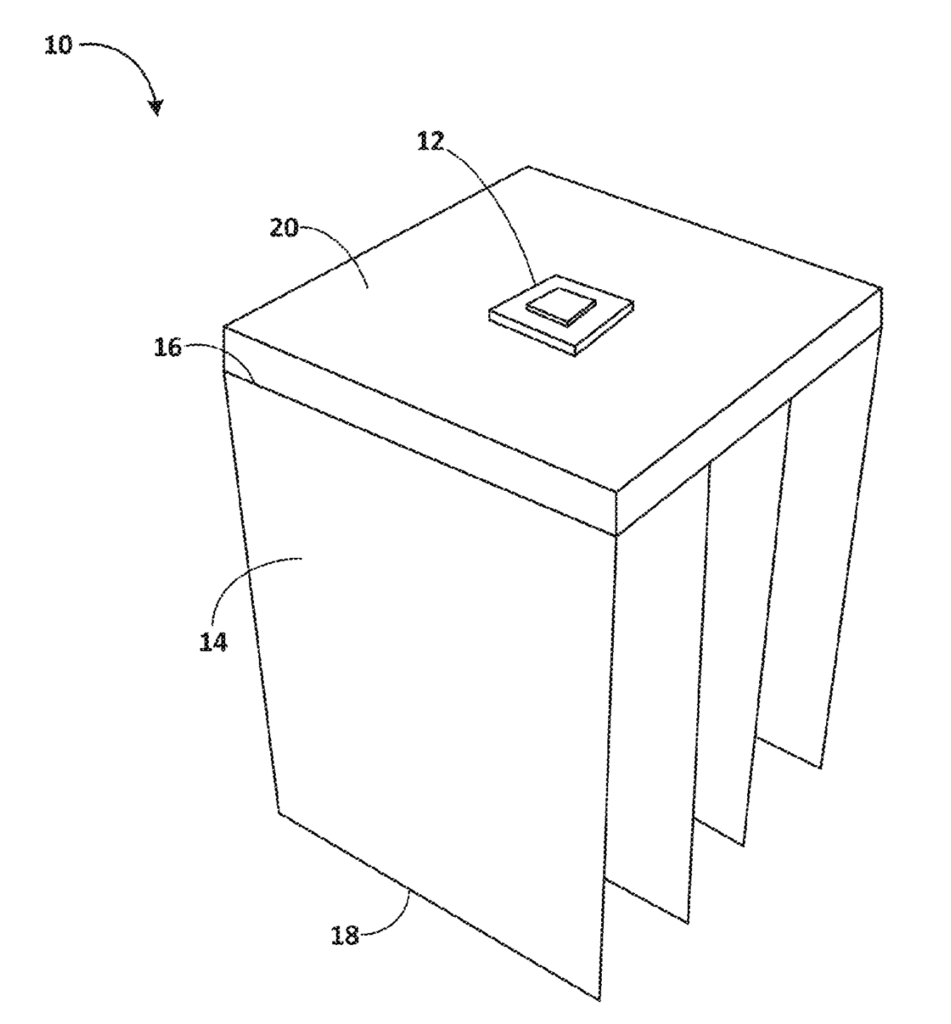Lightweight and Flexible Heat Sink from Carbon Nanotube Sheet
Introduction
FSU researchers created a lightweight and flexible heat sink based on carbon nanotube (CNT) sheet which can also be expanded to other lightweight sheets such as graphene and boron nitride free-standing sheets. CNTs have good electrical and thermal conductivity with large surface to volume ratio due to its nanostructures and these properties are good for heat dissipation. Compared to the conventional aluminum heat sink or copper heat pipes, CNT sheets are more lightweight and have more flexibility; this reduces the manufacturing cost and makes it possible for versatile application with easier shape deformations.
Different CNTs can be used for free-standing sheet fabrication either multi-walled CNT and/or double-walled CNT. Entangled CNT structures show voids and large surface area and this also increase the convective heat dissipation in addition to the thermal conduction. Also the novel heat sink design has increased surface area to enhance the convective heat dissipation and flexible CNT sheet can increase the design freedom of the heat sink with higher number of fins for larger surface area for convection. Furthermore, the overall thermal conductivity is low.

- Abstract
- Claims
A heat sink for dissipating heat from a heat – generating apparatus includes one or more thermally conductive struc tures extending from , and in heat – conducting contact with , the heat – generating apparatus . The thermally conductive structures include sheets including carbon nanotubes , gra phene , or boron nitride . The one or more thermally conduc tive structures are attached to the heat – generating apparatus in a configuration designed to dissipate heat from the heat – generating apparatus . Techniques for making a heat sink , and techniques of cooling a heat – generating apparatus are also described.
We claim : 1 . A heat sink for dissipating heat from a heat – generating apparatus , the heat sink comprising : one or more thermally conductive structures extending from , and in heat – conducting contact with , the heat generating apparatus , wherein the thermally conductive structures comprise sheets comprising carbon nano tubes , graphene , or boron nitride , wherein the one or more thermally conductive structures are attached to the heat – generating apparatus in a configuration designed to dissipate heat from the heat generating apparatus . 2 . The heat sink of claim 1 , wherein the one or more thermally conductive structures comprise a sheet consisting of a network of carbon nanotubes . 3 . The heat sink of claim 2 , wherein the network of carbon nanotubes has been heat treated to reduce or remove residual processing surfactants and / or surface impurities on the net work . 4 . The heat sink of claim 2 , wherein the carbon nanotubes of the sheet have a specific surface area from 100 m?lg to 350 m – / g . 5 . The heat sink of claim 1 , wherein the one or more thermally conductive structures comprise two or more cool ing fins formed from a buckypaper sheet . 6 . The heat sink of claim 1 , wherein the heat – generating apparatus comprises one or more LEDs . 7 . The heat sink of claim 1 , wherein the one or more thermally conductive structures comprise a plurality of cooling fins in spaced part relation to one another , wherein at least one edge of each fin is connected to the heat generating apparatus with the fin having a body extending away therefrom . 8 . A cooling fin apparatus , comprising : a plurality of carbon nanotube sheets arranged in spaced relation to one another , and a base to which a proximal edge of each of the carbon nanotube sheets is fixed , each sheet extending away from the base toward a distal edge . 9 . The cooling fin apparatus of claim 8 , wherein the carbon nanotube sheets each consists of a heat treated network of multiwall carbon nanotubes . 10 . The cooling fin apparatus of claim 8 , wherein the carbon nanotube sheets comprise at least one layer of a heat treated network of multiwall carbon nanotubes and at least one thermally conductive layer which comprises an epoxy combined with graphite – nanoplatelets and / or carbon fibers . 11 . A method of making a heat sink , comprising : forming a sheet which comprises a network of carbon nanotubes ; and cutting and / or folding the sheet into a configuration adapted to dissipate heat from a heat – generating appa ratus . 12 . The method of claim 11 , further comprising heat treating the sheet to reduce or remove surface impurities on the network . 13 . The method of claim 11 , wherein the configuration comprises a plurality of cooling fins . 14 . A method of cooling a heat – generating apparatus , comprising : operating the apparatus to produce heat ; and cooling the apparatus by conducting the heat away from the apparatus via one or more thermally conductive structures extending from , and in heat – conducting con tact with , the apparatus , wherein the thermally conductive structures comprise sheets comprising carbon nanotubes , graphene , or boron nitride .
Share
Title
LIGHTWEIGHT THERMAL TRANSPORT DEVICES AND METHODS
Inventor(s)
Zhiyong Liang, Jin Gyu Park, Nam Nguyen
Assignee(s)
Florida State University Research Foundation Inc
Publication #
20190293370
Publication Date
September 26, 2019
